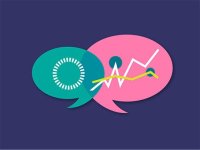Digging Into Data: It’s Not Just for Math Class
A mock census program introduces students in grades 4 to 12 to statistical thinking and data analysis.
Your content has been saved!
Go to My Saved Content.From Super Bowl predictions to neighborhood crime rates to political polls, statistics are all around us—except, perhaps, at school. How many students have opportunities to dig into real-world data about issues that interest them? And how many teachers (outside the math department) know how to leverage the power of statistical thinking to help students make sense of their world?
A new collaboration by the American Statistical Association (ASA) and Tuva Labs aims to introduce statistical problem-solving to students in grades 4 to 12.
The Census at School project teaches students how to analyze data, starting with information that has a high engagement factor. “It’s all about themselves and their peers,” says Rebecca Nichols, director of education for the ASA.
Students start by taking a census of their own classroom using an online survey. They answer a series of simple questions that yield data points—the length of their arm span, say, or the number of hours they sleep on a typical school night.
Once they analyze their results, they can compare their findings with random samples of students from elsewhere in the U.S. or in other countries. Questions naturally arise as students notice patterns and outliers in the results.
“They learn how to formulate a question that could be answered with data,” Nichols explains. That’s the start of the statistical problem-solving process. The Census at School site is loaded with teacher resources to help students analyze and interpret data, and reach defensible conclusions.
Making Census Data Student-Friendly
Census at School started in the United Kingdom more than a decade ago and was brought to the U.S. by the ASA to coincide with the 2010 U.S. Census. How popular is the project? “As of this morning, we have had 27,737 students participate, from 47 states plus the District of Columbia, Guam, and the U.S. Virgin Islands,” Nichols said, with a statistician’s precision.
Tuva Labs, a platform for building data literacy across the curriculum, aims to expand participation by making the Census at School project even more accessible. As part of its curation, Tuva Labs has “cleaned” the Census at School data, for example, to remove unreasonable values and make it easier for students to analyze results.
The same information is also available in the “messy” version for teachers who want their students to think critically about the reliability of data. For instance, have users entered data about their height in feet instead of centimeters? Have they offered an unreasonable value for the number of hours a night that they sleep?
Those are the errors that need to be scrubbed before data can be analyzed. “Some teachers like it messy. It’s an opportunity to show students what real data looks like,” Nichols says.
The Tuva Labs website also features graphing functionality, plus lessons on how to use the tools. “That should make it even more accessible for teachers who don’t use statistical software,” Nichols says. It’s also a visually appealing site, with dramatic photos that draw in users who aren’t necessarily attracted to data sets.
The bigger challenge facing many teachers isn’t a lack of information—it’s having too much of it. “As a society, we have access to more and more data,” says Harshil Parikh, founder of Tuva Labs. His organization wants to “make data more accessible to people who are not experts [at data analysis]. How can we make it easier for people to get their hands dirty with data?” (Read more about Tuva Labs in a previous article, “How to Help Your Students Develop Data Literacy.”)
Why Data Literacy Matters
Countless questions—from civics to health to global issues—could be investigated by having students analyze data: Does racial profiling happen in your community? Are students getting enough sleep on school nights? Does your school district spend too much on energy costs? What’s the most dangerous street for bicyclists in your neighborhood? How fast could Ebola spread?
A host of complex questions will face our students in the future. Knowing how to find their way to reliable answers and being able to sniff out inaccuracies are key skills for being informed, aware citizens.
“Our lives are governed by numbers,” according to a landmark report published by the ASA. Guidelines for Assessment and Instruction in Statistics Education, commonly known as the GAISE Report, is worth a read by any teachers who wonder why data analysis deserves a place outside of math classes.
The report argues that quantitative literacy—the ability to make sense of those numbers—goes well beyond academic outcomes and empowers students to think for themselves.
“Teachers are realizing they need to give students opportunities to question the things they’re presented with, whether it’s a news article or story unfolding in their community or internationally,” says Parikh. Across the curriculum, students need to know how to ask, “What do the data say?”
